In 2010, Insaka Football Club was all but unbeatable in the North Dublin Schoolboy League. In its first year of operation, it won the under-18s league. The next year it won both the league and the cup.
The achievement was all the more remarkable given the club's genesis. "Coaches literally went around Blanchardstown picking up kids playing football on the streets," organiser Ken McCue of the group Sports Against Racism Ireland (Sari) says. Other players came from established clubs where they had experienced "horrible" racist abuse from fans and opposing teams.
One of the teens recruited to the team was 17-year-old full back George Nkencho, the Irish-Nigerian man shot dead by gardaí in Clonee last week. "He was a big unit," McCue recalls. "But he was as timid as anything. He would be apologising to wingers for tackling them."
Insaka means "a place to gather" in Bemba, a language spoken in Zambia. The purpose of the team was to give black youths in west Dublin a safe place to gather, work on their football skills and possibly eventually get picked up by top-tier clubs.
It was also more than a club, McCue says. There was a focus on instilling a sense of discipline and pride in the players and giving them tools to fight back against the racism they faced in society. In the book Ethnicity and Race in Association Football, ethnographer Max Mauro calls the Insaka team a “space of resistance against different forms of racism”.
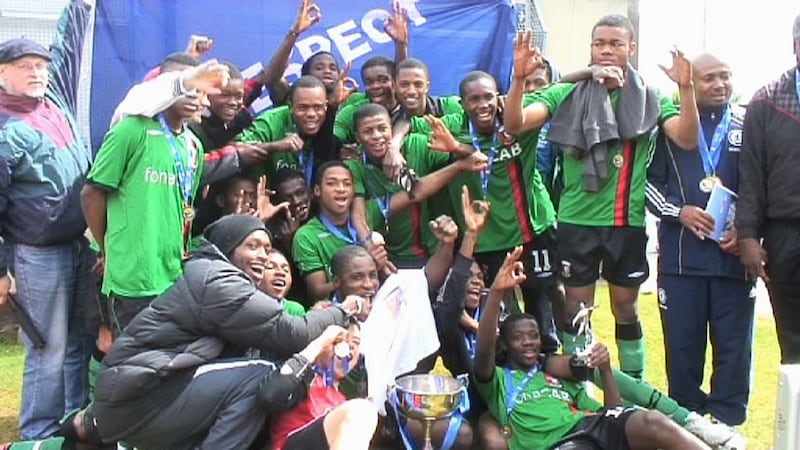
They were also very good. “We couldn’t lose a game. We would be beating teams six and seven-nil regularly,” McCue says.
This often led to Nkencho and his teammates being racially abused. It got so bad that plainclothes gardaí would sometimes have to stand at the sidelines to make sure matters didn’t escalate.
The assistance of Garda ethnic liaison officers (ELOs) such as Sgt Vincent O’Connell was invaluable to Insaka, McCue says. O’Connell liaised closely with the team, got to know the players and built up a level of trust with them. He even used a Garda bus to drive the team to away matches. “People didn’t know what was happening when they saw a bunch of black young lads getting off a bus with a uniformed guard,” says McCue.
Other gardaí who built up positive relations with black youths in the area include Dave McInerney and Darren Coventry-Howlett, he says. “They probably had 60 years’ experience between them in diversity work.”
The relationship between the team and gardaí developed to the point that at one point Insaka loaned some players to the Garda soccer team which was facing relegation at the time (McCue says some of the players held onto the Garda football socks afterwards. “The guys were showing off the Garda logo to attract the girls.”
At another point, McCue learned some Insaka players were in danger of being attacked on St Patrick’s Day. To avoid this, officers arranged for the team to be bussed out to the Garda sports grounds in Westmonstown for a football match and food.
Also part of Insaka at the time was Toyosi Shittabey. At 15, Shittabey was too young to play for the first team but he took part in coaching sessions and would frequently be put in the same training group as Nkencho. They soon became friends.
“George and Toy were very close,” recalls another Insaka player who asked not to be named. “They both used to arrive to training early and we would hang out before we started.”
McCue says: “They would just play football all day. At night the lads would climb in through a hole in the fence to the pitch to keep playing.”
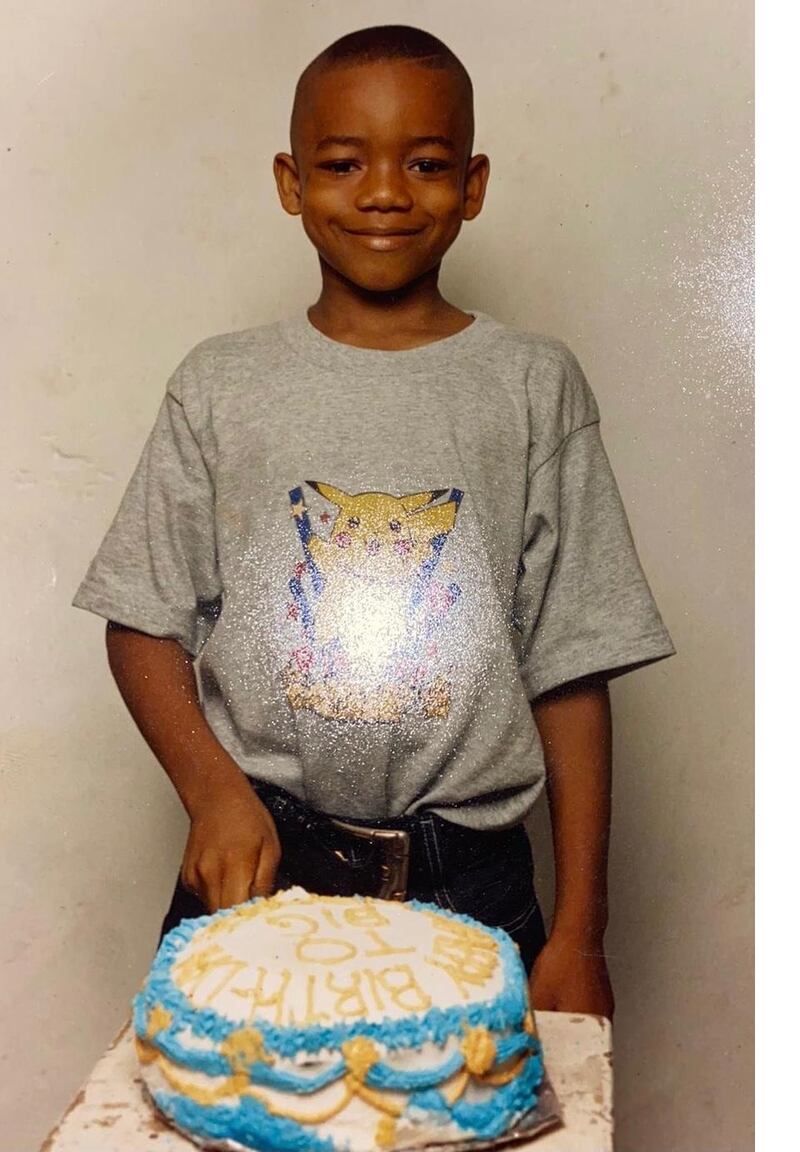
*****
Toyosi Shittabey was stabbed to death on April 2nd, 2010 in Tyrrellstown. During a row preceding the murder, Shittabey and the group he was with were called n*****s by their alleged attackers, leading some to describe his death as one of Ireland’s first racist murders.
The Irish-African community was devastated and angry following the 15-year-old's death, particularly Nkencho and the other Insaka players. "After the passing of Toy, we went a bit downhill because it was hard to play football. It affected George because he saw Toy so much," recalls Nkencho's friend and Insaka player, Israel Ibanu.
In Dublin, community leaders and gardaí feared black youths would riot or seek out revenge against white teenagers. But, in the end, there was little unrest, even after it became clear no one would be convicted of Shittabey’s killing.
According to McCue, much of this was down to the trust Garda ethnic liaison officers had built up in the preceding years, both through Insaka and other projects.
Following the arrest of suspects in the case, Garda Connolly set up a workshop with Insaka players to explain to them how the legal system worked and what would happen next in the case. “He was on first-name terms with the lads. They listened to him.”
Other Garda outreach efforts are described in a book published last year by Insp Dave McInerney, who founded the Garda Racial Intercultural and Diversity Office (Grido). The book, Realities of Policing Diverse Communities from Minority and Police Perspectives, is a remarkably frank and often critical account of the Garda’s minority outreach efforts through the years. However, it details the work of Grido officers following the death of Shittabey, arguing that the years of Garda outreach work made them trusted in the community.
On the night of the killing, Garda diversity officers immediately started reassuring the black community of Garda support. Gardaí also made it clear that the investigation would not ignore the “alleged racist element of the murder”.
A local ethnic liaison officer told McInerney: “I think the superintendent thought all hell was going to break loose, but he didn’t realise the fruits of our efforts were now paying off.”
McInerney quotes a minister in a local African church: “Quelling the possibility of the local youth having a mass riot was very important work of the Garda as it also helped prejudicing the trial.”
Gardaí were even able to calm tensions within Shittabey’s family over how he would be buried, McInerney writes. (The family was Muslim but he had converted to Christianity, leading to a dispute about the funeral.)
*****
The immediate reaction to George Nkencho’s death on December 30th after he was shot last week has been markedly different. Both deaths were followed by peaceful protests. However, Nkencho’s killing was also followed by several serious public order incidents by smaller subsets of demonstrators.
Many of the details of George Nkencho’s death remain unknown and will emerge only following the completion of a Garda Ombudsman investigation, if then. However, certain facts have become clear in recent days, having been corroborated by both Garda sources and people close to the Nkencho family.
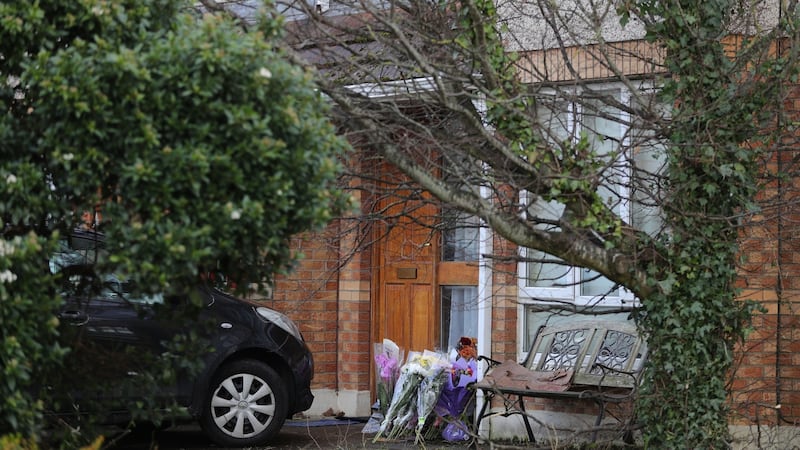
Just after midday, Nkencho entered Eurospar in Hartstown, where he became involved in a confrontation with the store's manager. He punched the manager in the face, causing serious facial injuries, before drawing a kitchen knife from his pocket.
Unarmed gardaí arrived at the scene and were threatened by Nkencho, according to a Garda statement. A slow-motion foot chase ensued, with gardaí following behind Nkencho and telling passersby to clear the way as he walked through the Hartstown housing estates.
By the time Nkencho reached his home some 15 minutes later, two members of the Garda Armed Support Unit (ASU) had arrived.
The 27-year-old knocked on his front door, which was answered by his sister Gloria. In a written statement, Gloria says she told the gardaí that Nkencho had mental health issues and to leave him alone.
Gardaí say they believed Nkencho might be about to enter the house and take hostages. One officer ushered Gloria back inside the house and the door was closed over. Nkencho was then pepper sprayed before ASU members fired a Taser at him twice in a bid to make him drop the knife.
By this stage Nkencho’s three siblings were on the other side of the hall door. Neither the pepper spray nor Tasers had worked, and Nkencho was continuing to threaten officers, gardaí say. One of the ASU members then opened fire with his official firearm.
Five shots were fired. According to family members, two of these entered through the hall window. At least three of the shots hit Nkencho, including two that hit him in the chest and led to his death.
*****
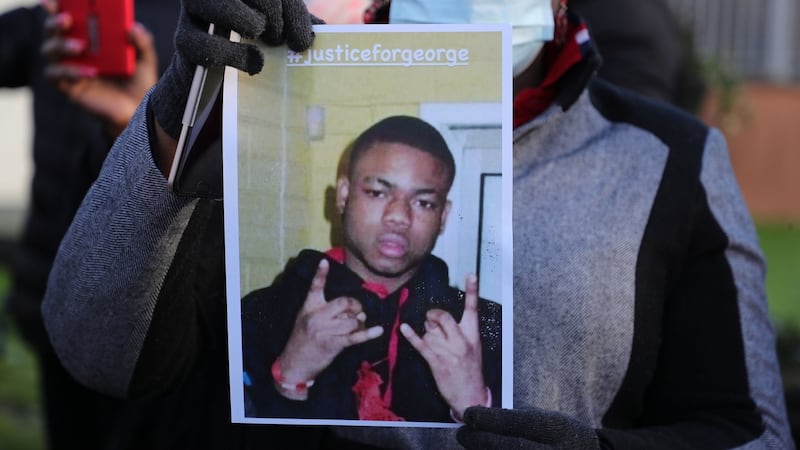
In the days since, a 13-second video of the shooting, taken by a dog walker from the other side of a green area, has been shared widely. People who view the video online tend to have one of two broad reactions. Those who support the gardaí say it clearly shows gardaí defending themselves against someone lunging at them with a large knife. Others say it shows gardaí using excessive force.
Legal representatives of the Nkencho family have broken down the footage into segments which they say shows that one of the shots was fired while Nkencho had his back turned, while the last was fired as “George staggers to the door defenceless”.
There doesn’t seem to be any dispute that Nkencho was suffering from serious mental health issues in the months beforehand. Gardaí had been called to the house earlier in the year following a violent incident in which he had made family members fear for their safety.
The local GP had visited the house at several points over the year to assist with mental health issues, and the family were waiting on supports from the HSE for Nkencho at the time of the shooting.
It is unknown whether the gardaí at the scene had any knowledge of these issues.
*****
Protests started almost immediately following the shooting, with friends of Nkencho gathering at a Garda cordon near the Nkencho house on Wednesday evening. Demonstrations started outside Blanchardstown Garda station the next day. At one stage some protesters tried to gain access to the station before being told to move back by other demonstrators.
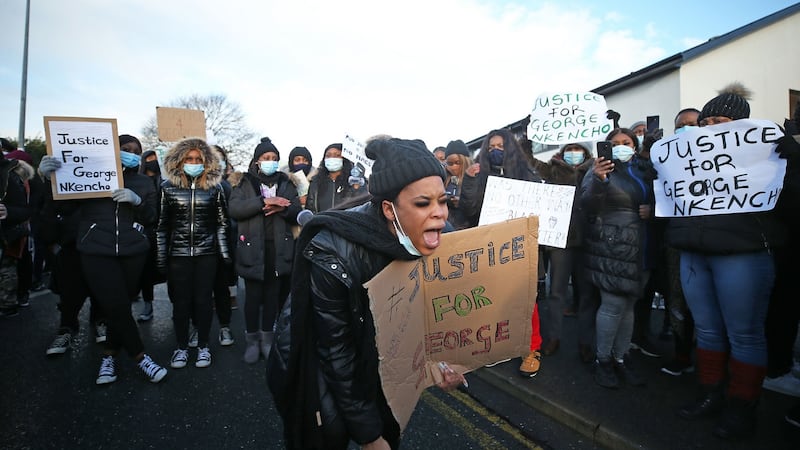
Some protesters then marched through Blanchardstown Shopping Centre and on to the Eurospar where Nkencho had assaulted the manager. The supermarket closed its doors, keeping staff and customers inside, as some demonstrators shouted abuse outside and banged on the shutters.
At one of Thursday’s demonstrations, Nkencho’s brother Emmanuel told a crowd: “I want the fed, whoever who he was that shot him, I want him terminated. I want his contract terminated. I want him finished. When we find him, yeah?”
A source close to the family says Emmanuel remains highly distraught but has agreed his comments were “stupid”.
“Some of the older lads [who were involved in Insaka] are trying to keep a lid on things and calm the situation,” says McCue. He says they are trying to explain to younger people that the Garda Ombudsman, which is investigating Nkencho’s death, is a separate organisation from the Garda and will investigate the shooting fairly.
The Garda has also deployed diversity officers to reassure community leaders and pastors, and help restore calm to the situation.
*****
However, McCue believes this is too little too late. Relations between gardaí and the west Dublin African community, particular its young people, have deteriorated in recent years following the reorganisation of the Garda Diversity Office and the transfer of experienced officers such as Vincent Connolly out of the area, he says.
McCue says young black men are being stopped and searched more often, leading to gardaí being seen as the enemy. He recalls talking to one diversity officer a few years ago who “broke down in tears in frustration” over the current state of outreach work.
Much of the unrest following Nkencho’s shooting could have been avoided given better community outreach in recent years, McCue says.
He goes even further: “If Vincent Connolly was still in Blanchardstown, George would still be alive. He would have known him, known his mental health background and made other guards aware of it instead of them going in blind.”
It is impossible to say if McCue is correct in this assessment. One garda with knowledge of the investigation and critical firearms incidents says the mental health of a suspect “would not and should not” play into the split-second decision of whether deadly force is warranted.
*****
It is also arguably unfair to pin all the blame for the unrest following the shooting on the Garda. Unlike today, social media was not a major part of daily life at the time of Shittabey’s killing.
Following Nkencho’s death, false information spread across many platforms, inflaming tensions. These included assertions that he was armed with just a butter knife (it was a sharp kitchen knife), that he was surrounded by 15 armed gardaí (only two of the gardaí in the front garden carried weapons), and that he was shot with no provocation.
False information spread by far-right and racist social media accounts claiming Nkencho had a violent criminal history added to protesters’ anger. Some of these accounts also expressed glee that Nkencho had been killed.
“Even before this happened, in the last month or so, there seemed to be an increase in activity from that social media cohort who push racist and ultranationalist agendas,” says Dublin City University disinformation researcher Eileen Culloty. “So obviously they seized upon the killing of George to increase the popularity of their agenda.”
This narrative quickly seeped in to the mainstream and became accepted fact for many people discussing the shooting, Culloty says, adding that this wasn’t helped by a mainstream news outlet branding Nkencho a “thug” hours after the shooting.
“The difficulty for ordinary citizens is they don’t see the bigger narrative that is being pushed and they don’t know what is true or not,” says Culloty.
McCue adds: “I saw normal, decent people that I know personally sharing this stuff.”
The following day gardaí confirmed Nkencho had no previous convictions.
*****
Community leaders appealed for calm following the violent incidents, which have not been repeated. On Tuesday this week protesters gathered again outside Blanchardstown Garda station. About 70 people listened to appeals for solidarity and a public inquiry into the shooting.
One man led the crowd in a Nigerian protest song: “Soli soli soli...Solidarity forever, Solidarity forever. Solidarity forever. We shall always fight for our rights.”
The mood was defiant but calm. Everyone was free to speak; one woman even asked a reporter if they would like to address the crowd. Visitors to the station walked around the demonstrators, while gardaí inside occasionally looked out at them from an upstairs window.
“People say guards were never racist in Ireland, that they never killed people for racist reasons like in the US. Maybe we should say these protests are actually so that doesn’t become the future,” Memet Uludag of United Against Racism told the crowd.
At the end, loaves of fresh bread donated by a local bakery were handed out, and protesters were urged to return the next day. The protests are due to continue next week, culminating in a candlelight vigil on January 13th when demonstrators will wear white T-shirts with five red marks on them, depicting the five shots fired by gardaí.
Asked afterwards if young black people are discriminated against by gardaí, protester and student Marryleen Aiyegbusi says she believes it’s more a class issue. “Black people are the same as Travellers or other people who live around the area. We’ve all had bad experiences with the guards. They have mistreated all of us.”
Another demonstrator, Funmi, who asked that his second name not be used, says: “If you had asked me about the relationship with the guards last week I would, in all sincerity, have said it’s very favourable. However, this situation changes everything. It has ruined the record of the gardaí.”
Another person who believes gardaí have a case to answer is former Insaka player Israel Ibanu, who first met Nkencho at the age of 12 or 13. But Ibanu also wants his friend to be remembered for his life, not just his death.
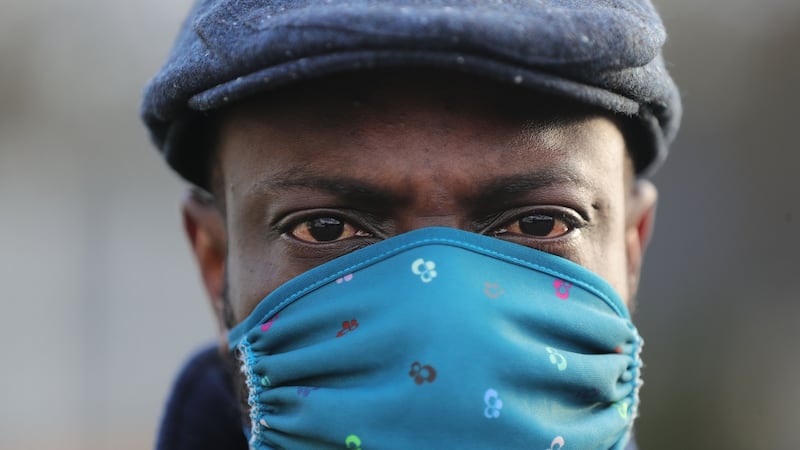
As teenagers they would play a football game in Ongar they called "benches", using the public seating as improvised goals. "When he played football he was the most animated you would ever see him. He was just so determined," says Ibanu, who now referees in the Dublin schoolboy football leagues.
Later the two would make hip-hop music together in the local Youthreach centre and create performances depicting the issues they faced in daily life. Nkencho’s stage name was Young G.
Off the pitch Nkencho was quiet, Ibanu says. “He wouldn’t come into a room shouting. He would only speak when he was very comfortable with you. But if he knew you, he was so calm and welcoming to you.”
In recent years the two lost touch, he says. One of the last times Ibanu heard from Nkencho was a late-night text asking him to play in goals in an upcoming match.
Ibanu, who competes in athletics, says he couldn’t as he had a race coming up. “He wished me best of luck in my race. That was our last conversation.”
*****
The Garda declined to make a diversity officer available for interview but released a detailed statement on Friday outlining its outreach work in Blanchardstown before and after Nkencho’s death.
It said its diversity unit has not undergone any restructuring in recent years aside from changing the name from Grido to the Garda National Diversity and Integration Unit (GNDIU).
There are currently 280 trained Garda diversity officers (GDOs) nationwide, it said, and GDOs in Blanchardstown have engaged with local African communities and groups in the aftermath of Nkencho’s shooting.
Furthermore, Garda Youth Diversion Project workers “have responded to the needs of the family, and have provided support since the incident occurred,” it said.
It said it has also “responded to the needs of many young black Irish people affected by this incident since. The project will continue to provide outreach support to black Irish young people in areas identified in a targeted way in the areas where the need exists.”
The Garda pointed to several recent outreach programmes for the African community by its diversity and juvenile liaison officers.
These include liaison with the FAI on football-centred outreach programmes and a initiatives to encourage young people from an African background to consider joining the Garda.
Black Irish young people often engage with Garda youth projects more than white young people in areas such as Ongar, Clonee, Phibblestown and Tyrrelstown, the Garda added.





















